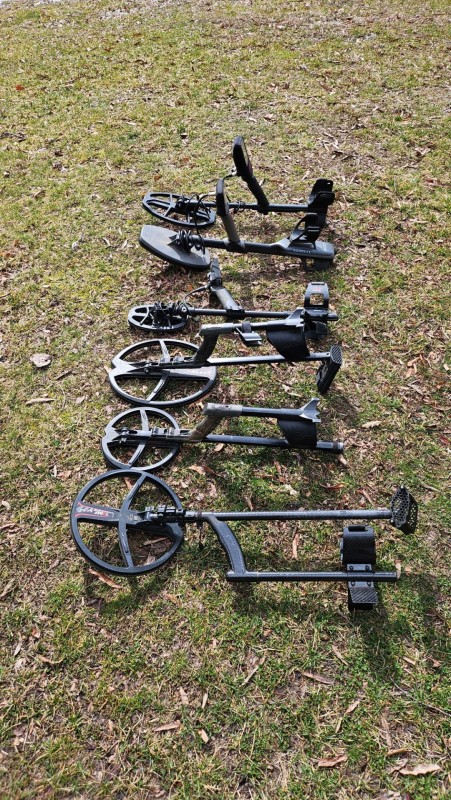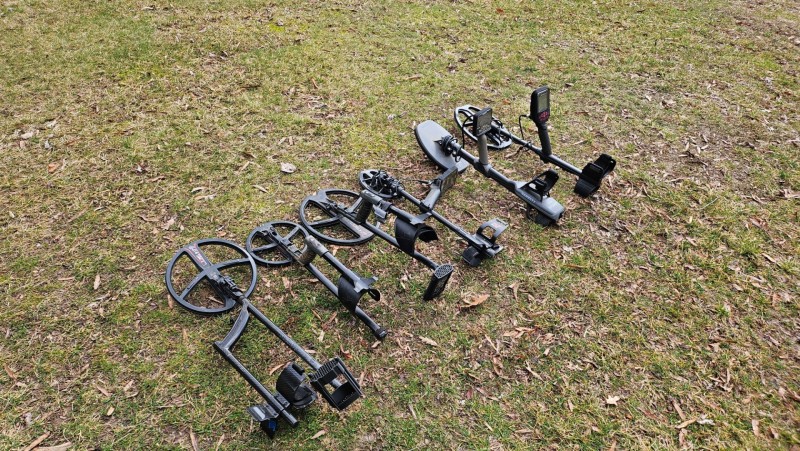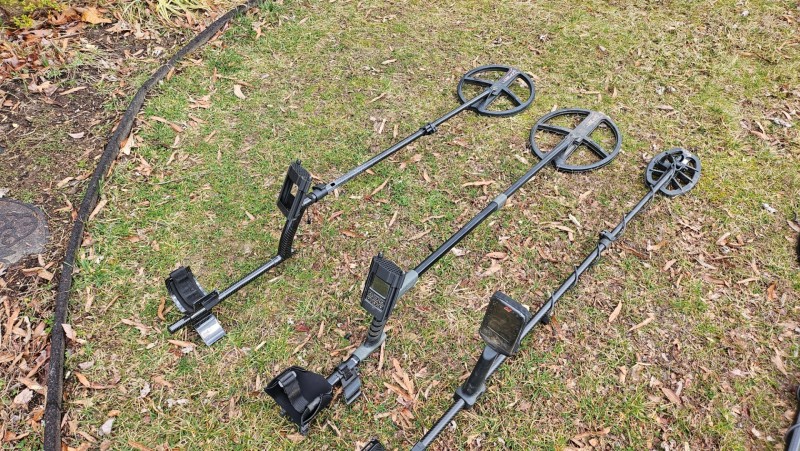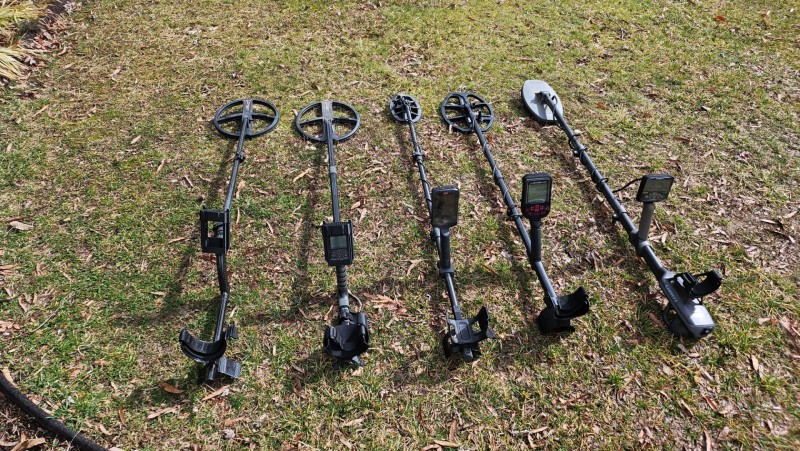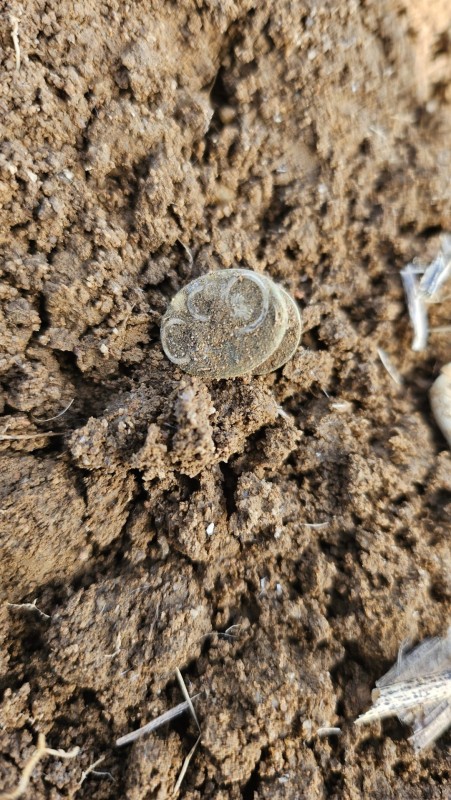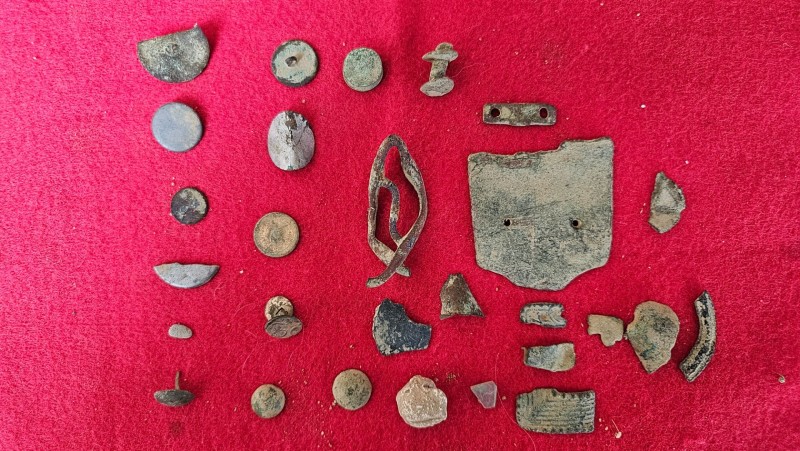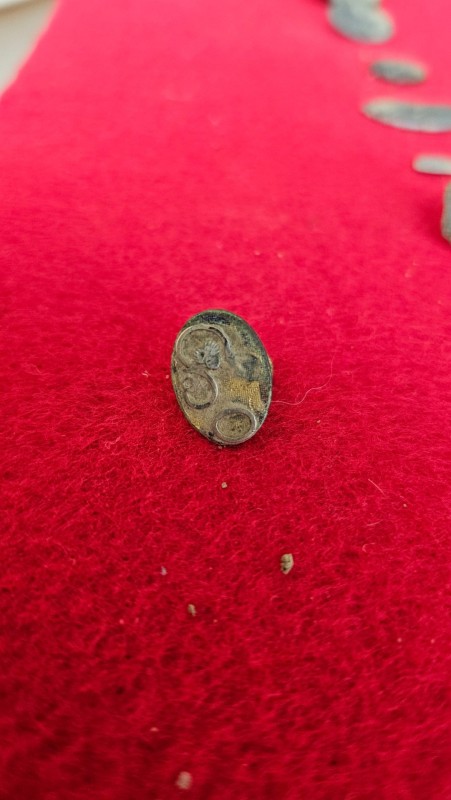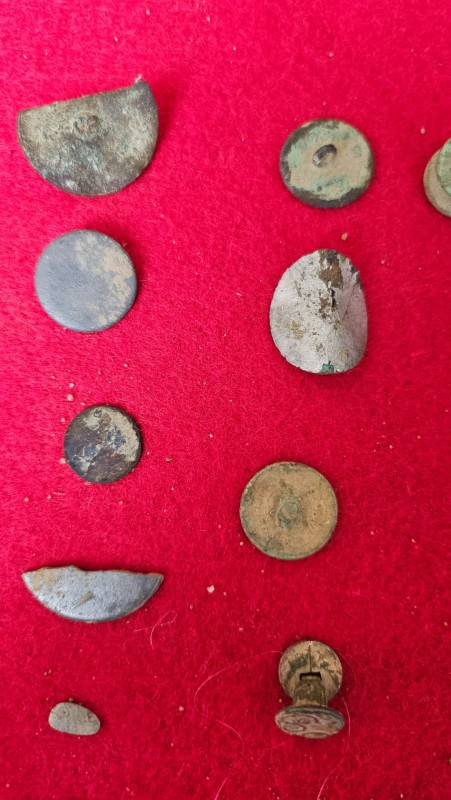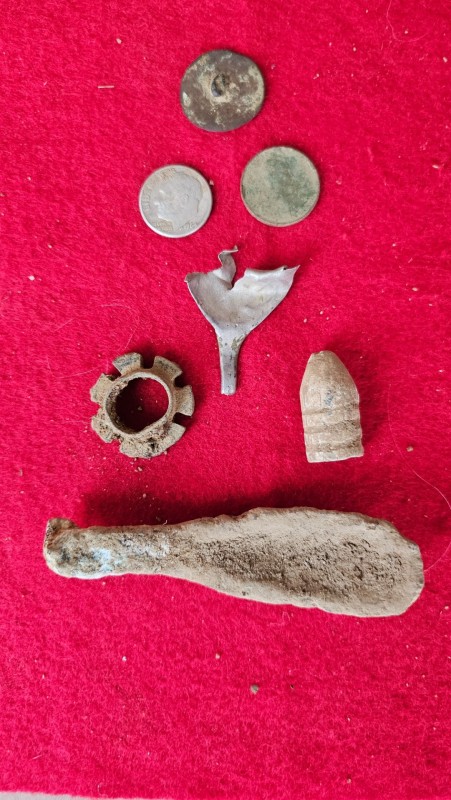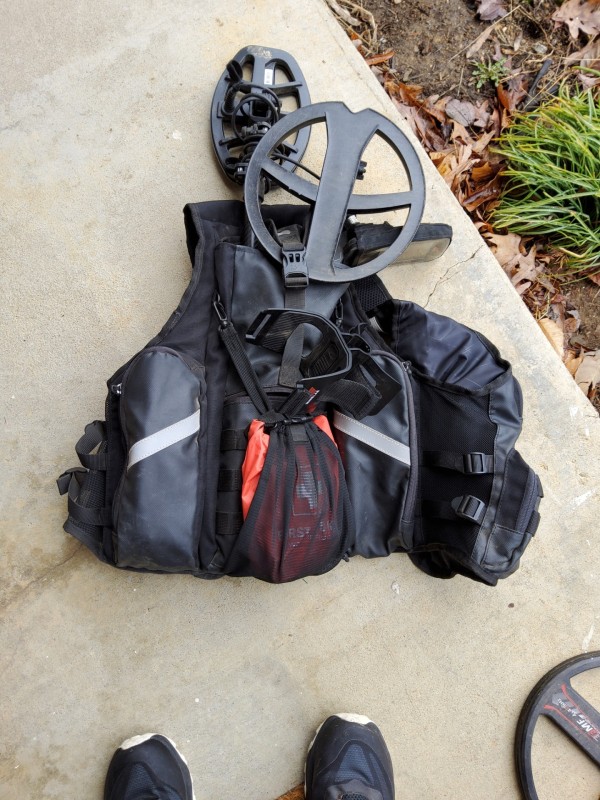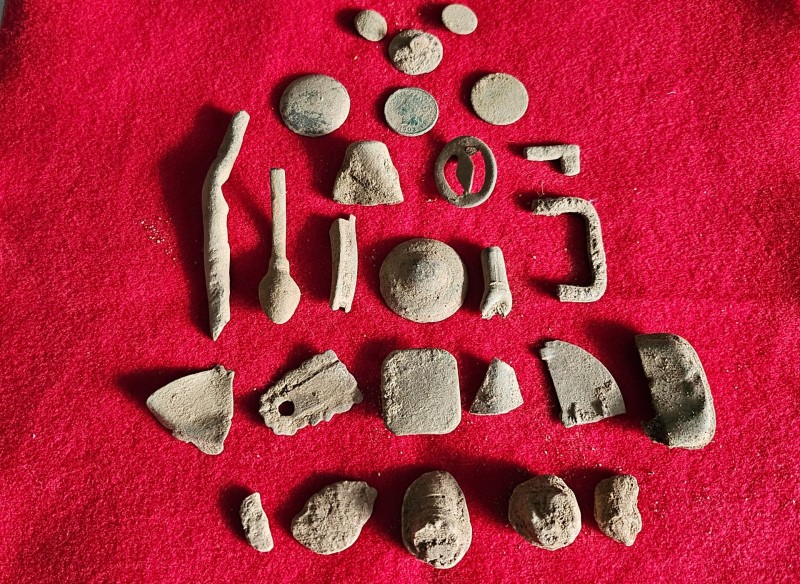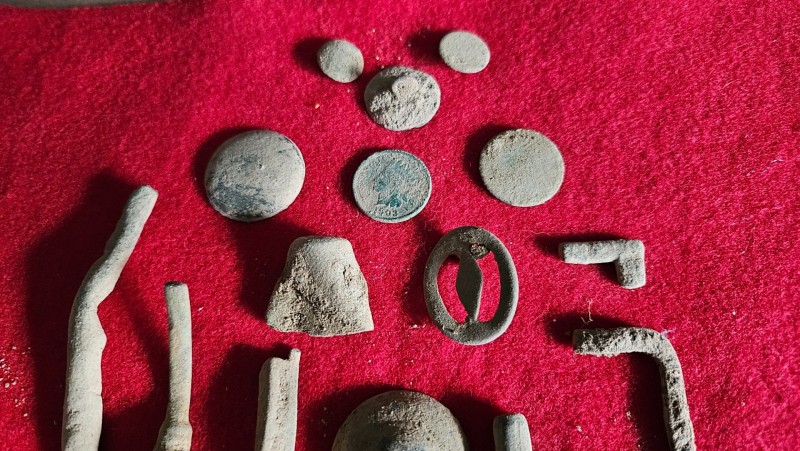-
Posts
6,111 -
Joined
-
Last visited
-
Days Won
32
Content Type
Forums
Detector Prospector Home
Detector Database
Downloads
Everything posted by Chase Goldman
-
It's very promising, Gerry, I'll give you that, but strictly from a technical and performance standpoint. However, as a pragmatist, I'll refrain from singing zippity-do-dah until it becomes widely available to USA users at the advertised AUS price point. There are significant hurdles to that still need to be overcome and questions that need answering including inventory, supply chain, and distribution struggles, US regulator certifications, overseas demand and the ever present threat of potential litigation from industry intimidators (whether or not "they" have has a case is immaterial, USA distribution simply opens the door on this possibility (see Quest V60/80 series)), etc. Until those hurdles are addressed and put aside, then it is basically a very promising unicorn with an uncertain arrival. Better than the Nokta PI promises at this point, but as the Quest rollout demonstrated, USA distribution is not out of the woods. Rooting for them, most definitely, but concerned whether they will be able to gain a stable foothold here in the US. Once that happens, then sure, I'll sing a song.
-

Me At Div. One Ewalt Farm
Chase Goldman replied to George Kinsey's topic in Metal Detecting For Coins & Relics
Uh oh. -

Me At Div. One Ewalt Farm
Chase Goldman replied to George Kinsey's topic in Metal Detecting For Coins & Relics
George, did you win the 50-50 raffle? -
The connectors are also completely different between the Nox and Vanquish coils.
-
Bill, Thanks. Regarding weight, balance of the Deus 2, let me provide some additional context and perspective on my "toe-heavy" comments. First of all, setting balance aside, the Deus 2 platform, even with the 13" coil is still the lightest overall detector system out there vs. any other detector rocking a similar-sized coil. Balance is an issue with the 13" coil, but the light overall weight and "S" handle shaft design mitigate those issues somewhat such that it becomes less noticeable as swing. I can still swing the 13" XP coil all day. Furthermore, if I add offsetting weight below the armrest by attaching a pinpointer to my shaft mounted pinpointer holder, I can improve balance. For beach and water work, I use a dedicated SteveG CF carbon fiber shaft system designed for the Deus. This system provides more adjustment for balance and optional accessories such as a balance weight and two different remote control mount designs which also help balance as well as also using a similer "S" handle design. I like the SteveG mount for beach and water for a couple other reasons too - since the entire shaft is CF it can withstand repeated dunking and exposure to water and salt sea environments. It also enables the waveguide needed to operate the XP coil submerged to be routed internal to the shaft to prevent wire snags and a cleaner looking install. It can be retracted into a small profile and has the advantage, being a round shaft, to enable the coil to be oriented as needed. However, the XP shaft system is slightly more compact overall, so I prefer using the XP shaft for field work where I have to lug my detector in with a day pack, etc. See the extended Deus 2 with the SteveG shaft (and 11" coil), the XP Shaft and the 13" coil, and the Manticore with the M8 below. Here are all my current detectors that see actual field work, fully extended, below. Here they are, all compacted, below. I snuck the XP Deus shaft with the OEM remote control mount (vs. the RC Digs cage mount) in there for comparison purposes. In fact, if a detector manufacturer is not providing a system that enables the detector to be retracted for easier transport these days, then I think that puts them behind the power curve compared to today's detectors. Even the Axiom can be compacted for daypack use (and comes with its own pack). Above from top to bottom: Nokta Legend with the LG30 Garrett Axiom with the 11x7 DD ML Manticore with the M8 XP Deus 2 shaft and RC Digs cage with the 13" coil XP Deus 2 shaft and traditional RC mount with the 9" coil Steve G XP Deus shaft system with the RC Digs angled mount and 11" coil. Regarding my "toe-heavy" comments when I started swinging the Deus 2 and 13" coil for the trek back to the vehicles, it was more pronounced and noticeable to me at first because I had been swinging the Manticore with its feather light M8 coil all day. If I had been swinging the 11" coil on the Manticore all day, pulling the D2 out with the 13" coil would have been a whole different experience. The imbalance of the XP D2 with the 13" coil is something you do get used to only because of the light overall weight and less torsion on the wrist during swinging with the "S" handle stem. It's a non-issue with the 9" coil and even the 11" coil.
-
I'm on Ver 2.0 on the Deus 2, and the latest release for the M-Core. It's all anecdotal because it is not documented in the release notes, but both Bob and I have run some comparisons and our general perception is that although the ver 2.0 update of the Deus 2 only explicitly mentioned increasing Goldfield small gold sensitivity and compatibility with the Xtreme Hunter two-box coil, it appears that Goldfield's cousin, Relic Mode was also enhanced and overall TID stability seems even more rock solid and repeatable than in previous iterations.
-
If you have been following my posts and those of my detecting buddy, Bob - AKA F350Platinum, you will see that we have been having a great level of success, especially detecting colonial relic sites, over the past year or so. I attribute that to a combination of gaining more proficiency with the Deus 2, gaining access to some exciting new and productive permissions, and utilizing the latest Deus 2 updates (Version 1.1 and 2.0) which fixed most of the lingering issues with the Deus 2 since its release and added some great new features and performance. Even before these updates, we were having such great success with Deus 2 in the relic fields, coin shooting, and beach hunting, that other detectors just didn't get pulled into action unless we wanted to check something out or run some sort of comparison. I have limited opportunities to detect, so when I do get a chance to detect with Bob, I want to make the most of it and not be out there learning some new detector or messing around with unfamiliar settings. About a year ago, I had purchased the Nox 900. On the surface, ML seemed to have addressed most the remaining shortcomings associated with the Nox 800, improved the shaft system, and added some features like adding Deep Pitch (DP) audio as a feature for all detecting modes. They also changed the Target ID scaling and also enabled compatibility with all legacy Nox OEM and third party accessory coils, including my favorite Coiltek Nox 10x5. All of these changes and the ready availability of the Nox 900 vs. the Manticore and the fact that my 800 was no longer in warranty, convinced me to pick up the Nox 900. Got it into the field, and let's just say, I was not impressed. The main issue I had was getting it to run stable at a reasonable sensitivity level (I like to run just above 20 out of 25 sensitivity). It was really chirpy, especially in DP audio and running it along side the Deus 2 was like night and day. Even after a few other tries, it never quite clicked with me. And it started gathering dust. With the 8X5.5" M8 coil release becoming imminent (or so I thought), I decided to invest in the Manticore over the summer. Took it to the beach, and it was just OK and perhaps also a little chirpy. Again, I simply fell back and continued to swing the Deus 2, while the Manticore sat idle. Finally, a few weeks back, I was finally able to get my M8 coil for the Manticore, and after having much success the last several outings with the Deus 2 13" elliptical and 9" round coils at a our most popular and productive areas, felt that some of the more dense iron patches at these sites could benefit from being scanned with the smaller M8. The area we are detecting heavily is not readily accessible to our vehicles, so we have to hike a ways across a couple of fields to get there. I have a Rhino Skin vest with a sizable and long back compartment that provides the ideal setup to carry detecting gear (either my Deus 2 and its two coils or the Manticore with the M8), food, water, and "just in case" items for several hours of "unsupported" detecting. Above, you can see my Rhino Skin vest/pack holding the Manticore and M8 coil and also the XP Deus 2 9" coil/shaft. This was going to be the Manticore's first relic hunting field test. Despite, the limited swing coverage of the Manticore with the M8 coil, I decided to go ahead and make the trek to the detecting area swinging the Manticore. For this session, I decided to keep it simple. I had the detector set up in AT General with Enhanced audio, Default tone settings (2-Region, All tones, variable pitch). After noise cancelling and ground balancing, I set sensitivity at about 23 and left recovery speed and discrimination and ferrous limits at the defaults. I was not walking slow enough to ensure sufficient coil coverage, but targets are few and widely scattered so I was not expecting to recover anything except by chance. Mainly, the walk afforded an opportunity for me to get used to the Manticore tones, ferrous tones, ground feedback in horseshoe (no discrimination) and responsivity again as I had only briefly used it beach hunting and run through various settings in only my test garden. On the trek, I recovered a couple pieces of miscellaneous brass and a modern bullet casing. Met up with Bob in the field who was already there and who was detecting some fringe areas with little success. We started to make our way over to the area and my first keeper target was a fired musket ball. We zig-zagged to different parts of the hot spot area and thick iron and started to do our thing. I recovered some horse saddle brass and more miscellaneous brass pieces. Then the buttons started to pop, brass, gold gilt, silver plate and tombac. I also dug some larger brass (perhaps a partial musket butt plate and a mangled buckle). My final Manticore keeper was a gold plated cufflink (complete with the post and toggle clasp) with an interesting flowering vine design. The Manticore M8 did not disappoint. I had an outing with similar results to my previous trips to this area with the Deus 2. I like the expressive audio, the ability to quickly switch discrimination off and on using the trusty horseshoe button to lessen audio fatigue, the additional information provided by the 2-D target trace display, and obviously the slightly improved separation ability of the M8 coil vs. the Deus 9" round. I got used to the different target IDs, the ferrous falsing tells, and target trace clues to make dig decisions. But frankly, the keepers were pretty obvious, and I dug little junk that fooled me. Finally, the Manticore ergonomics with that M8 coil are fantastic, to the point that once I started swinging my Deus 2 with the 13" elliptical coil again, I really felt the weight and toe-heavy balance. For the trip back to the vehicles, I switched back to the Deus 2 with the 13" coil for better coverage of the large fields and managed another flat button and a rivet and some modern bullets. We quickly surveyed a new site to finish the day and I managed to recover a few surprises from that field, which was had a lot of iron contamination - apparently an old house site. I snagged a .52 Sharps minie ball, a silver Rosie ('64), a flat button, a wheatie, a portion of a tiny silver spoon, and a part of a parasol slider mechanism. All in all, not bad for a first relic outing with the Manticore - I have a lot more to learn and tweak - and not a bad quick survey of a promising new field. The perfect detecting weather, great company, and awesome finds made for another fantastic detecting day. As is our tradition, Bob and I reviewed the day and tentatively planned future adventures while drinking his awesome post hunt coffee. His ornate sword guard and British Colonial period regimental button were really the finds of the day. Bottom Line: Bob has some amazing Colonial sites and the Manticore and M8 coil certainly did not disappoint in a challenging iron environment...looks like I will be bringing both the Manticore and Deus 2 along on future digs.
-
Well, the Manticore is rated to 5 meters vs. 3 meters for the CTX. But neither of those is 20 meters like the Deus 2 or 60+ meters like the Excalibur II.
- 31 replies
-
- 1
-

-
- problems
- jewelry detecting
-
(and 1 more)
Tagged with:
-
Have you Have you tried the X-Y display on Deus or the possibly the 2-D display on Manticore?
- 31 replies
-
- 1
-

-
- problems
- jewelry detecting
-
(and 1 more)
Tagged with:
-
I understand the frustration regarding TID scaling in general, and the specifics of the Deus/Deus 2 scaling which indeed compresses the high end of the TID scale (high conductors) while giving a huge range on mid-conductive targets from 20 through 80. However, this example, which is valid, is also a great reminder that a detectorist should not rely solely on TID to make a decision. Large steel targets do indeed ring up high, as well as large aluminum targets. As far as these large targets are concerned, pitch audio or pinpoint help to readily unmask their true nature through elongated audio or huge pinpoint mode footprints so they can be readily bypassed if looking for jewelry or coin-sized targets. Furthermore, as Jeff McClendon pointed out, target audio quality or purity is also a great "discriminator" between round or symmetric targets vs. junk, irregular targets that sound more distorted. Of course, damaged jewelry and coins, and non-continuous precious metal loops such as broken rings or earrings can also affect this outcome in both audio and target ID indications. It all comes down to the fact that no TID scaling option is necessarily going to be universally acceptable to all detectorists because target objectives vary. Enabling some end-user customization of TID scaling, as JCR suggested, in certain "regions" of the scale depending on the detectorists needs would be a welcome feature addition. In the absence of such a feature, and to be frank, no TID scaling scheme is going to be "perfect" regardless how much customization is allowed, then the detectorist who has neither the luxury nor will to "dig it all" will have to "play the odds" as they have had to do forever. They will need weigh for themselves whether that 80 TID is worth chasing based on the classic risk/reward assessment that accounts for the likelihood of occurrence and the return on "investment" should you chose to chase the targets at either TID extreme. Is the occasional honker that rings up 80 WORTH digging up thousands of junk or low value coin targets, or is your time best spent simply recovering the bulk of the valuable targets that fall in a narrow range of TIDs, than wasting time on digging potential "white whales". The math is really not all that hard once you have a sufficient data to understand how valued targets are distributed across the range. As a "professional" it makes sense to do this kind of data assessment in addition to the hard physical work of dive recovery to make your recovery efforts as efficient and lucrative as possible.
- 31 replies
-
- 6
-

-

-
- problems
- jewelry detecting
-
(and 1 more)
Tagged with:
-
Did you receive the activation email? You can't log on until you activate your account following registration by clicking on the activation link in the email. You have to first re-register and then after you have completed re-registration and verification you are not a bot, Activate using the activation link in the email sent to the address you used to register. Worked just fine for me. I ventured over there for specific topics but the user community issues coupled with the eye watering layout meant that I had to REALLY be motivated to go there because whatever information I was seeking out was unavailable elsewhere (a rare occurrence). I re-registered to ensure access to the archived information.
-

Go Small Or Go Home Pt. 2
Chase Goldman replied to F350Platinum's topic in Metal Detecting For Coins & Relics
Many of the Colonists who lived in the area served in various branches of the British military (e.g., George Washington served as a young Britsh Army officer and travelled extensively doing land surveys for England). So there are some opportunities to recover pre-revolutionary Royal Military uniform accoutrements from Colonial period house sites lost by occupants who were British military veterans, even if a military detachment was not posted in the area or any wartime action occurred. There was limited War of 1812 military activity in the vicinity and we've recovered verified uniform parts from that era (though not at this particular site and the button Bob recovered seems to be much older than that perod). And finally, we occasionally recover CW military relics although practically no notable CW activity occurred in the area, and these too, were likely lost by locals who were former CW veterans who returned with their military uniforms, equipment, and firearms. -

Go Small Or Go Home Pt. 2
Chase Goldman replied to F350Platinum's topic in Metal Detecting For Coins & Relics
Yep. You saw that correctly. We're both getting a less selective as to what ends up in the trash/recycling scrap bucket these days based on the older relics these sites are producing: 19th and 20th century common household stuff (other than precious metal items, coins and jewelry and certain identifiable antique brass items such as thimbles), some brass horse tack stuff, and even old, fired musket balls are going to occasionally end up there, as well. -

Go Small Or Go Home Pt. 2
Chase Goldman replied to F350Platinum's topic in Metal Detecting For Coins & Relics
Had a blast as usual, Bob. That old, likely-British military regimental button was amazing to see first hand and the depiction detail in that sword or dagger cross-guard is just amazing and just plain interesting and puzzling to contemplate its purpose. I'm putting together a separate finds thread for this hunt because, spoiler alert, I pulled out the Manticore for it's maiden voyage in the Relic fields this time out instead of solely using my trusty, tried, and true Deus 2 <gasp>. So stand by for my first take on Manticore as a relic machine, coming up soon. -

Some Things To Take Note Of With The Algoforce
Chase Goldman replied to phrunt's topic in AlgoForce Metal Detectors
So blatantly fake, then. I know power bank suppliers do a lot of embellishing on mAh numbers but this is ridiculous. But I guess they get plenty of suckers to fall for this baloney without any consequences to the supplier, so why not. Same deal on the ridiculous storage capacity claims on counterfeit/fake memory cards. Although unlike memory card fakes, proving the bogus mAh claims are false are difficult for the average consumer to prove. Just ridiculous. SMH. As far as power banks go, I like Anker and Ugreen products as a good balance of decent cost, performance to claims, features, and quality hardware. When dealing with power banks exposed to the elements, built-in protective features are very important to ensure you don't end up with a flamethrower under your elbow. LiIon tech is very unforgiving when not handled properly. -
Dan - Is this a special configuration regarding the "easily installed" antenna or are you just saying by having a second dedicated water rig, the antenna just stays installed so it's easier to deal with.
-

Some Things To Take Note Of With The Algoforce
Chase Goldman replied to phrunt's topic in AlgoForce Metal Detectors
Definite typo - I have a similar clone one to that and it's 10000mAH -
Here's an example of the zip tie approach that F350 mentioned. This poster is using a modified Anderson XP mount attached to a Nokta Simplex shaft system, but the principle applies to other approaches using the XP WS6 standalone mount, as well. Just got to use a little imagination.
-

Quarters Coming In At 2 In All Terrain General.
Chase Goldman replied to dman97844's topic in Minelab Manticore Forum
Steve - all that changed last month. The Pennsylvania repair center is no longer affiliated with or authorized to do US in-warranty repairs on ML detectors due to a ML Corporate decision. The Pennsylvania facility is now an independent repair center and will do post-warranty repair work on ML gear, if requested. US In-Warranty repair autorization is handled now by the ML Illinois factory repair center and you ship your gear to them directly. Here is a thread that addresses this recent change. -
You did great. Those two pseudo All Metal modes are strange in the way they behave and process target signals. Those who don't have a Deus or who do but have not experimented with those modes are probably lost with either explanation. It's something you have to use to appreciate but it can also be a little overwhelming unless you have options to tame it (e.g., Notch 00, IAR, Max FMF Frequency, High Square audio, and periodic ground grabs). I just like Relic's reactivity to what's in the ground. I use other modes for interrogating targets or for cherry picking. But if I use them for general searching instead of Relic, I feel like I'm operating a little partially blind to what might be under the coil and, like you, I like how non-ferrous audibly pops out at you when in thick iron. And you can't argue with the results.
- 19 replies
-
- 2
-

-
- relic detecting
- relic found
-
(and 1 more)
Tagged with:
-
Great hunt my friend. Congrats on yet another Spanish silver. It was a joy to get out even though I got to the field 2 hours later than planned. Nevertheless I was happy with my finds in quality, quantity, and variety, though I did break my silver streak. Oh well. I didn't exactly sob uncontrollably on my 2 hour trek home. Glad you are really liking Relic, Bob and tweaking it to suit your detecting style. It's easy to like it seeing how successful you have been with it of late. You're killing it! Anyway, I hope you don't mind me injecting some additional detector tech nerd commentary and clarifications on D2's Relic mode based on my experience using Relic almost exclusively for more than a year and loving it even more since the Deus 2 Version 2.0 update was released. Though the update only officially addressed improvements to the Goldfield program processing and sensitivity to small gold, I have noticed what seems to be greater TID stability on all programs and greater sensitivity with Relic, as well. First some context - Relic and Golfield's lack of discrimination that is otherwise present on all the other stock programs also means that those two programs lack the ability to process and display negative TIDs. Notching 00 will blank weak, small iron and ferrous mineralization related ground noise not cancelled by ground grab that occasionally show up as TID 0. But not all iron is TID 0, so notch 00 does not blank all iron. Also, for some strange reason, TID 0 is audibly heard as pitch vs. Iron audio, which is very confusing, so 00 notch gets rid of that anomaly as well. If you run with a reference threshold, anything detected that is notched out will blank the threshold. Iron Amplitude Rejection (IAR), the Relic/Goldfield form of discrimination despite its name doesn't actually blank or reject iron, per se. It works more like an iron bias, suppressing the tendency of small and/or large iron (depending on the IAR level applied) to false outright or false off the edge of the coil. If it detects iron, it processes and displays a corresponding ferrous ID and iron audio for anything below TID about 10 (not adjustable). Increasing IAR has no impact on the breakpoint TID that results in iron audio being applied. I run with an aggressive IAR of 5 in mild soil as even deep non-ferrous tends not to indicate ferrous at the edge of detection. In hotter soils I back off on IAR. In the hottest of soils, I back all the way off IAR to 0 because IAR will aggressively break up any target signal in such ground. IAR is far from foolproof. I haven't actually observed it provide a false positive signal on a non-ferrous target (I periodically dig high probability ferrous targets just to make sure the detector is not fooling me). As Bob mentioned, IAR does get consistently fooled by certain common ferrous targets including: big, deep flat iron; iron hooks and bent nails; and by iron rings and nut fasteners. There are telltale clues to ferret out falsing: typically falsing is also accompanied by a simultaneous ferrous grunt and corresponding simultaneous indications of a ferrous and non-ferrous target on the horseshoe display, falsing often manifests as TID 85 or occaisonally TID 75 that devolves into single digit ferrous IDs when you turn on the target. If you can isolate and turn on the target and maintain the non-ferrous ID, there's a good chance the target is non-ferrous or there are co-located ferrous and non-ferrous targets. If you are digging a deep hole and getting a progressively strong pinpointer response indicating a large target, you are probably digging to iron. My Nokta discriminating pinpointer helps to keep me from having to completely extract many of these big pieces of leverite. In the mild, sandy soil of the Northern Neck, there is little if any depth advantage to be gained by going with a PI unless the coil size available to you is much greater than the maximum coil size for the preferred vlf detector. Regarding "dig it all", yes that pretty much applies, but the Axiom "on demand" ferrous check should work better at greater depths than would be expected in a hot dirt location. But if PI is not really detecting much deeper than the D2, in mild soil, there is no compelling reason to fly partially blind by running the Axiom vice the D2 in the mild soils. Anyway, I still need to clean up and examine my finds closer but here's a look at my keepers. Many of which were plucked out of machine gun iron while running IAR at 5. No silver this time out for me other than a hint of some silver plating on one of the brass items. But I did manage an IHP, several buttons, a thimble as well as several fancy colonial buckle pieces and saddle adornments. And a rarity for this neck of the woods, a fired CW era minie ball. On the way back to my vehicle I got a sweet 93 and thought my silver streak was going to be saved. Turned out to be a '65 clad quarter. Couldn't even eek out a '64 to save me. SMH. Thanks again for the opportunity to dig with ya, Bob. It was yet another killer outing.
- 19 replies
-
- 6
-

-
- relic detecting
- relic found
-
(and 1 more)
Tagged with:
-
Probably not. It’s designed for large, deep contiguous cache’s of metal. Preferably high conductors. It would be harder for it to detect metal caches where the individual items are not fused together. Gold alloy’s would also be harder for it because gold conductivity drops significantly when alloyed with other metals and impurities. Furthermore, this type of target would never occur naturally, so it would be in some sort of container, correct. Unless that container is non-metallic, you would probably be more likely to detect the container rather than the contents. The types of questions you keep asking the forum revolve around non-natural targets, very deep buried caches, perhaps under rock, perhaps in non- metallic containers etc that push beyond the technical limits of the consumer grade detectors you keep asking about, including even the XP Xtreme hunter. You would probably be much better off investing in professional industrial/archeological equipment like ground penetrating radar that can reveal subterranean voids rather than consumer metal detectors for whatever it is you are trying to find. Just a suggestion.
-
So it looks like Breeze Airlines is restricting recreational items that contain LiIon Batteries above and beyond the TSA restrictions which is certainly within their right to do so to further limit the hazard risk this technology presents to just personal electronics like phones, headphones, tablets, and laptops. Anyway, without knowing what detector rental models or rates will be available to you in the immediate area you are visiting, I can't advise you on that. I've never rented a detector and would be most comfortable with one that I was already familiar with. Another option to consider would be to arrange to ship your detector to your destination in advance and then ship it back home at the end of your trip. It might be more cost effective than renting and you'll have the detector you know you'll like. HTH.
-
Jane - First a carification. The battery parameter the FAA/TSA is concerned about is actually "Watt-Hours" or "W-H" which is a measure of the energy stored in the battery and the potential for how much "fuel" is available to feed a fire vesus "Watts" which is a measure of the maximum product of volts times current that a battery can supply at any instant in time. The Nox 800 uses a battery rated at 3.7 v at 5000mAH which is equivalent to 18.5 W-H which is well below the 100 W-H limit. More info in my post linked below regarding requirements for checked baggage vs. a carry on bag etc.



